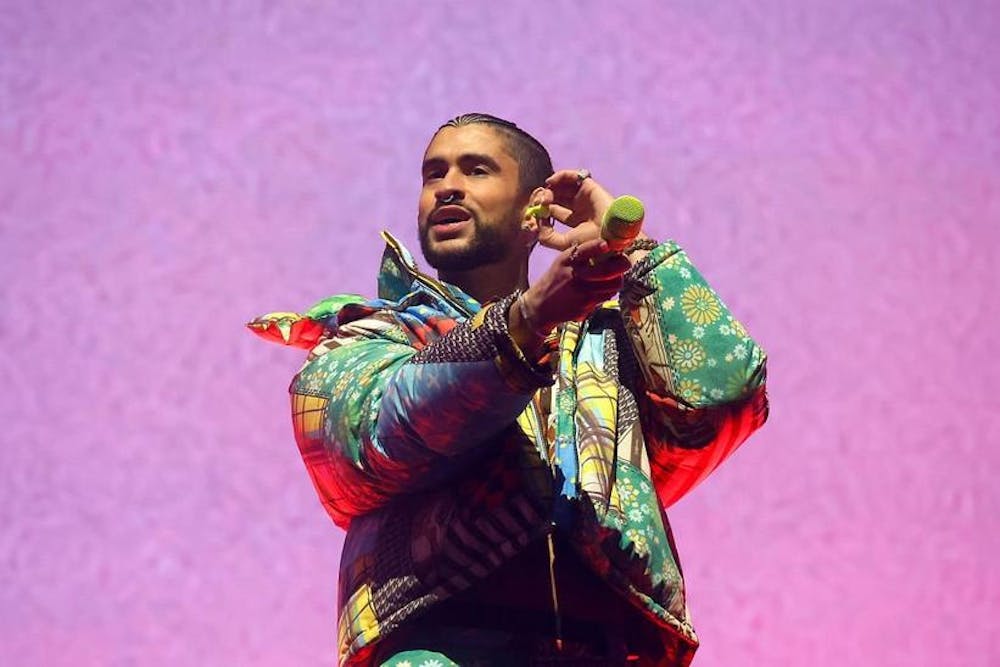In the 2000s, Latin music was forever changed when Latin trap rose to popularity, giving mainstream credibility to many Latin artists. The genre is a unique kind of hip hop that goes beyond the typical boundaries of Latin music but which has, nonetheless, been a game changer in the music world.
The meaning of Latin trap
Latin trap is defined as the child of traditional hip hop/rap and reggaeton influences. The “trap” part refers to “la calle,” or “the streets,” typically located in Latin countries, that were often filled with drugs, violence and hustling. The genre originated in Puerto Rico and has since expanded to other Latin nations, and today incorporates synthesizers, voice distortion techniques and the dembow rhythm. Dembow, a Dominican musical genre, has become a significant part of Latin trap, with artists, such as El Alfa, utilizing its repetitive and fast beats in songs like “Dembow y Reggaeton.” El Alfa is known as the king of dembow, but he is also considered a prominent figure in Latin trap. His song “Banda de Camión” contains key aspects of the subgenre.
Latin rapper De La Ghetto was one of the first artists to officially immerse themself in Latin trap, but he was also the first exposed to criticism.
Between 2005 and 2006, De La Ghetto started to dabble in the genre and many thought it was strange. De La Ghetto said people wanted traditional, tropical Latin music instead of the new sounds Latin trap brought to the table.
Four artists who transformed Latin trap
Myke Towers got his start on social media. From Río Piedras, Puerto Rico, Towers rapidly became one of the most recognized Latin trap artists. He has said that he is passionate about creating music and tries to approach this process without any regrets. His song “Llegará” is one that incorporates Latin trap rapping techniques and beats.
Another Puerto Rican artist who transformed Latin trap is Ozuna. Ozuna dominated Latin music with his diverse discography and is known for Latin trap songs like “Dile Que Tú Me Quieres” and “Baila Baila Baila.” Ozuna has also worked with other Latin trap artists like Anuel AA throughout his music career.
Farruko is a second Puerto Rican artist who did not originally create Latin trap songs. Farruko started making reggaeton pieces in 2009, but has since created hit songs for the genre such as “La Cartera” with Puerto Rican rapper/singer Bad Bunny, who is hailed the king of Latin trap. Popular tracks such as “I Like It” and recent hit “Monaco” established Bad Bunny’s place in the world of Latin trap. His individual creations and collaborations with artists like Farruko positively shaped the genre’s landscape.
More than just music
Latin trap became a community for many when artists began collaborating with one another to promote the genre.
However, homophobia and other forms of discrimination have been previously associated with this genre’s lyricism. Nowadays, most Latin trap artists have changed how this genre is perceived by creating meaningful pieces of music that bring light to important issues such as street violence and homophobia.
Kevin Fret, a Puerto Rican rapper, was the genre’s first openly gay artist. In 2022, Fret was murdered in an “alleged hate crime” according to a Facebook post by the Puerto Rico Trans Youth Coalition. Throughout his career, Fret received homophobic threats, highlighting the broader issue of discrimination within the Latin trap community.
Fret’s impact on Latin trap still exists within the community. He strived to inspire younger generations to confidently be themselves and not care about what others think. Although he experienced harassment for his sexuality, Fret also wanted to change the toxic environment of Latin trap and instill inclusivity in the genre.
Bad Bunny also aims to redefine Latin trap so that it strays away from machismo ideals. He has remained transparent about an array of issues in his songs, including his struggles with mental health. Bad Bunny excels at pushing the narrative that music can tackle serious topics related to well-being instead of focusing on lyrics that invoke negativity.
Latin trap is more than just music. It is tainted by discriminatory language, but bound together by artists who are passionate about Latin culture and creating positive change in the world.
It is a movement that has been held back by disruptors who have seen the genre as an outlet for their offensive remarks. However, it is also a movement that has grown to positively impact the Hispanic community and will continue to grow for years to come.
This article was edited by Sara Winick, Zoe Bell, Patricia McGee and Abigail Pritchard. Copy editing done by Isabelle Kravis and Olivia Citarella.





